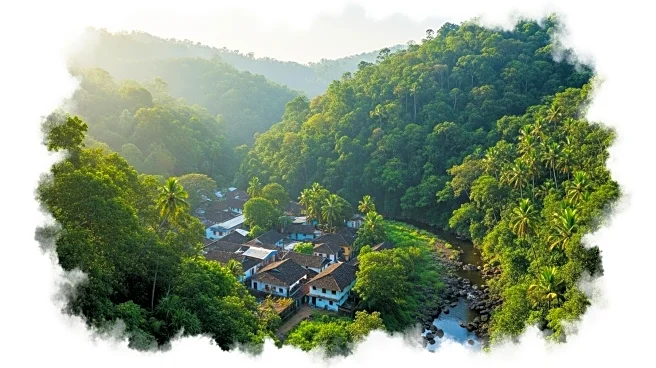What is the story about?
What's Happening?
The Marathi film Dashavatar, featuring veteran actor Dilip Prabhavalkar, has sparked discussions on the socio-political issues of Maharashtra, particularly focusing on the ecological challenges faced by the Konkan region. Released on September 12, the film has earned Rs. 21.3 crore against its Rs. 12.5 crore budget. The storyline revolves around villagers battling against the mining mafia, intertwining themes of unemployment, tradition, nature, and resistance. The film uses the symbolism of Vishnu's incarnations and the local Dashavatar tradition to depict personal transformations in the face of injustice. The narrative is driven by the relationship between Babuli Mestri, a folk artist, and his son Madhav, who is torn between leaving the village for work and staying to care for his father.
Why It's Important?
Dashavatar is significant as it reflects the ongoing struggle in the Konkan region against industrial projects that threaten ecological balance. The film has energized activists and sparked debate over sustainable development in Maharashtra. The Konkan region, rich in minerals, faces threats from mining, nuclear power projects, and other heavy industries. The film's portrayal of resistance against these projects resonates with real-life protests, such as those against the proposed oil refinery in Barsu village. By highlighting these issues, Dashavatar contributes to the discourse on preserving land and livelihood for future generations, emphasizing the need for environmentally sustainable development.
What's Next?
The film's impact may lead to increased activism and public awareness regarding ecological preservation in the Konkan region. Environmentalists and local communities might intensify their efforts to oppose projects that threaten the environment. The success of Dashavatar could inspire more filmmakers to address socio-political issues through cinema, potentially influencing public opinion and policy decisions. The film's reception might also encourage discussions on similar ecological challenges faced by other regions in India, fostering a broader movement for sustainable development.
Beyond the Headlines
Dashavatar's success highlights the power of cinema as a tool for social change, reflecting the struggles of ordinary people against corporate and governmental interests. The film's ability to connect with audiences on a personal level underscores the cultural significance of folk art and mythology in addressing contemporary issues. By portraying the Konkan region's battle for ecological preservation, Dashavatar raises ethical questions about the balance between development and environmental conservation, challenging viewers to consider the long-term implications of industrialization.
AI Generated Content
Do you find this article useful?













